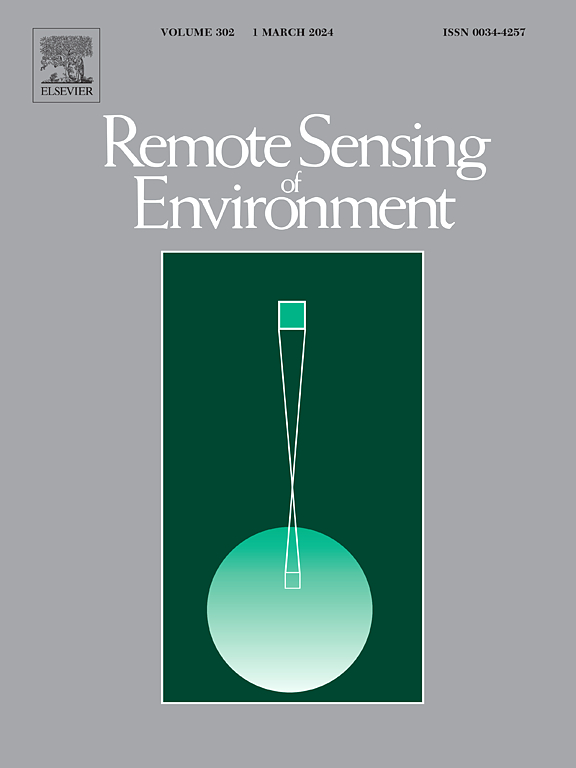南美洲北部的深度学习高分辨率人为排放清单
IF 11.1
1区 地球科学
Q1 ENVIRONMENTAL SCIENCES
引用次数: 0
摘要
由于高分辨率排放清单不足和大气研究稀少,南美洲北部的空气质量面临重大挑战。本研究通过开发一个新颖的框架,将 SDGSAT-1 和多源遥感数据集提供的高分辨率夜间光照数据与深度学习技术相结合,以缩小排放清单的规模,从而弥补这些不足。改进后的排放清单与气象研究和预测(WRF-Chem)模型中的气象输入相结合,实现了对污染物动态的精确模拟。根据哥伦比亚 SISAIRE 监测网络的地面测量结果进行验证,结果表明时空精确度显著提高,尤其是颗粒物(PM)和二氧化氮(NO₂),误差减少了 22-30%,相关系数从 0.68 提高到 0.85。这些发现强调了卫星增强清单在解决局部排放模式和季节变异性(如旱季 PM₁₀峰值(野火导致增加 150%))方面的关键作用。该框架为政策制定者提供了可操作的见解,以便在快速城市化的地区优先考虑缓解措施,并管理跨境污染。通过弥合数据稀缺的差距,这种可复制的方法为全球空气质量管理和公共健康保护提供了变革潜力,倡导在未来的应用中扩大地面监测网络和实时卫星数据集成。本文章由计算机程序翻译,如有差异,请以英文原文为准。
High-resolution anthropogenic emission inventories with deep learning in northern South America
Air quality in northern South America faces significant challenges due to insufficient high-resolution emission inventories and sparse atmospheric studies. This study addresses these gaps by developing a novel framework that integrates high-resolution nighttime light data from SDGSAT-1 and multisource remote sensing datasets with deep learning techniques to downscale emission inventories. The refined inventories are coupled with meteorological inputs into the Weather Research and Forecasting (WRF-Chem) model, enabling precise simulation of pollutant dynamics. Validated against ground measurements from Colombia's SISAIRE monitoring network, demonstrates significant improvements in spatiotemporal accuracy, particularly for particulate matter (PM) and nitrogen dioxide (NO₂) with error reductions of 22–30 % and correlation coefficients increasing from 0.68 to 0.85. These findings underscore the critical role of satellite-enhanced inventories in resolving localized emission patterns and seasonal variability, such as dry-season PM₁₀ spikes (150 % increase from wildfires). The framework provides policymakers with actionable insights to prioritize mitigation in rapidly urbanizing regions and manage transboundary pollution. By bridging data scarcity gaps, this replicable methodology offers transformative potential for global air quality management and public health protection, advocating for expanded ground monitoring networks and real-time satellite data integration in future applications.
求助全文
通过发布文献求助,成功后即可免费获取论文全文。
去求助
来源期刊

Remote Sensing of Environment
环境科学-成像科学与照相技术
CiteScore
25.10
自引率
8.90%
发文量
455
审稿时长
53 days
期刊介绍:
Remote Sensing of Environment (RSE) serves the Earth observation community by disseminating results on the theory, science, applications, and technology that contribute to advancing the field of remote sensing. With a thoroughly interdisciplinary approach, RSE encompasses terrestrial, oceanic, and atmospheric sensing.
The journal emphasizes biophysical and quantitative approaches to remote sensing at local to global scales, covering a diverse range of applications and techniques.
RSE serves as a vital platform for the exchange of knowledge and advancements in the dynamic field of remote sensing.
 求助内容:
求助内容: 应助结果提醒方式:
应助结果提醒方式:


